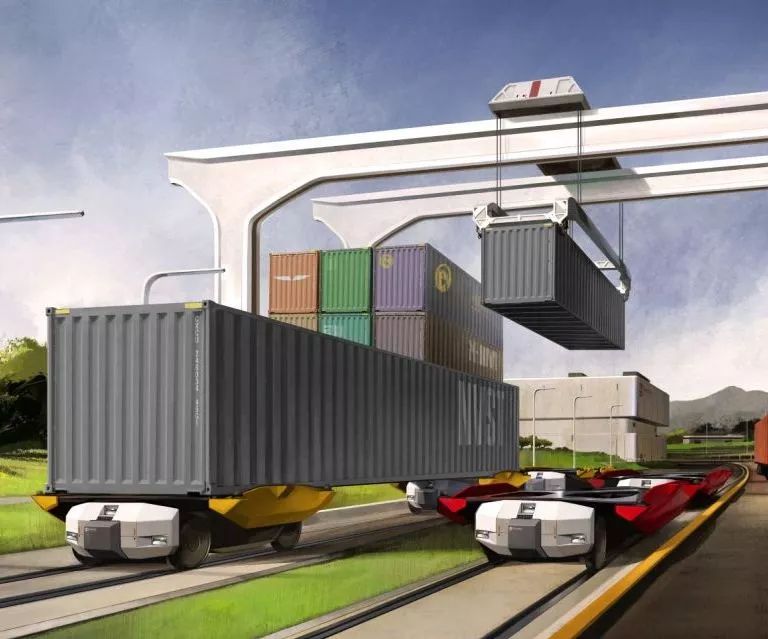A California startup co-founded by three former SpaceX engineers has emerged from stealth with a plan to build autonomous electric vehicles to haul freight by rail, and has raised a sizable pot of cash to move things forward.
"We founded Parallel to allow railroads to open new markets, increase infrastructure utilization, and improve service to accelerate freight decarbonization," said co-founder of Parallel System and former Head of Avionics at SpaceX, Matt Soule. "Our business model is to give railroads the tools to convert some of the US$700 billion US trucking industry to rail. The Parallel system can also help alleviate the supply chain crisis by enabling low cost and regular movement of freight in and out of ports. Parallel’s competitive edge is our autonomous battery-electric rail vehicles, which are designed to move freight cleaner, faster, safer and more cost effectively than traditional trains or trucks."
Instead of a massive train hauling a bunch of freight cars from A to B, the Parallel setup would see shipping containers mounted onto individually-powered autonomous battery-electric rail vehicles – which can operate independently but will be able to self-assemble along existing rail infrastructure to form freight platoons.
Single or double-stacked containers will be loaded onto two Parallel vehicles, with the company aiming for up to 500 miles (800 km) of per-charge range and a recharge time of under an hour. An autonomous system uses onboard cameras for hazard detection and the setup is expected to boast a 10x shorter braking distance than traditional freight trains.

Vehicles forming a platoon won't be coupled to each other, so containers needing to leave the main body can split off at points to follow a different route. This feature will also come in handy at vehicle crossings – breaking apart the platoon at any point with both sections coming to a stop either side of the crossing, and once road vehicles have moved through, the platoon can reassemble and roll on.
The hardware is only part of the story of course, and autonomous operation will be controlled by proprietary software that employs machine learning to optimize routing, scheduling and energy usage. Large traditional rail terminals could also be replaced by micro terminals closer to customers, reducing or eliminating local trucking needs, and containers could be loaded from a port crane directly onto the rail network.
Parallel Systems – which was founded by former SpaceX engineers Matt Soule, John Howard and Ben Stabler – says that limited track access and centralized traffic control make the closed network of the existing railroad infrastructure an ideal candidate for "the safe and early commercialization of autonomous technology."

It's relatively early days for the idea, but the company is already on its second-generation prototype autonomous electric freight hauler, and is currently testing vehicles on a closed track in the Los Angeles area. It's just raised $49.55 million in Series A funding to take the project to the next level and build a fleet of vehicles, start more advanced testing and expand the development team. The video below has more.
Source: Parallel Systems






